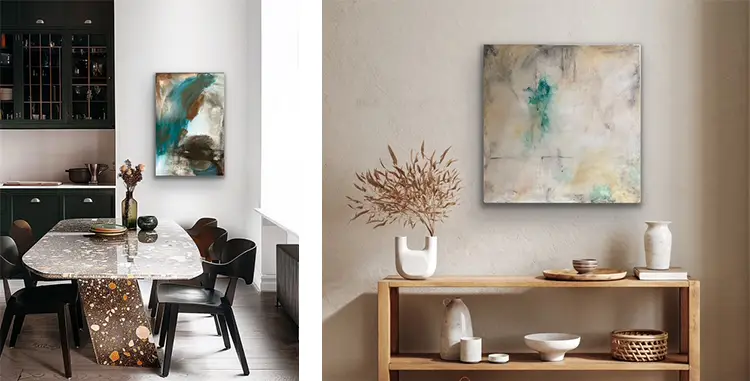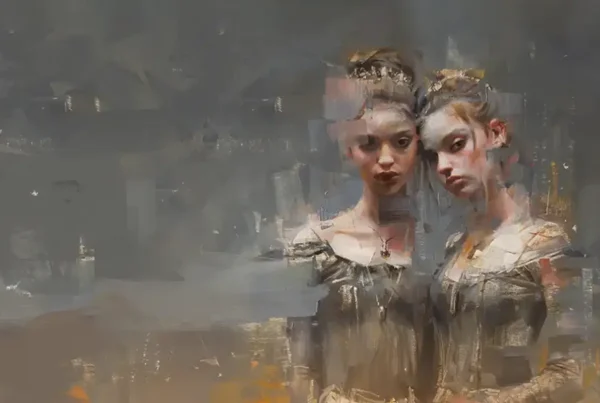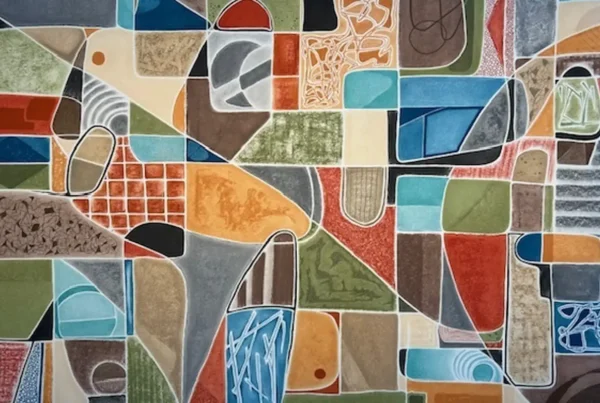“Creating has become my way of staying connected to her—a sacred conversation between mother and daughter.”
A Sacred Awakening Through Grief
When grief seizes the heart with its unrelenting weight, few imagine beauty could rise in its aftermath. For Marcy Stone, an author and artist, the unimaginable loss of her 21-year-old daughter, Sydney, on Christmas Eve 2016 became the catalyst for a deeply transformative artistic practice. Rather than retreat into silence, Stone stepped into her pain and began creating as a way of honoring her daughter’s memory. What began as a deeply personal refuge quickly evolved into a compelling body of work that resonates with many. Her art does not depict sorrow; it invites viewers into the intimate landscapes of resilience, remembrance, and spiritual presence.
Art became more than a therapeutic outlet; it grew into a lifeline and an emotional language for experiences too profound to articulate. Stone’s brushstrokes emerged not from technical pursuit but from raw emotional urgency. As she found herself irrevocably changed by loss, her art followed suit, deepening into something elemental. Each canvas became an act of survival, a quiet defiance against despair, and a testament to the enduring bond between mother and daughter. The process revealed itself to be not only cathartic but sacred, connecting Stone to Sydney in ways that defy the physical divide between life and death.
Over time, this approach gave birth to a distinctive aesthetic that listeners and viewers often describe as “soulful.” Yet for Stone, that soulfulness has a name and a presence: Sydney. She believes her daughter’s spirit guides her creative hand, appearing in every gesture and color choice. This ongoing connection has transformed the act of making into something more profound than art—it has become a sacred dialogue between worlds. Through each piece, Stone offers viewers a space where loss is acknowledged but not feared, where grief coexists with beauty, and where love, even in its absence, remains vibrantly alive.
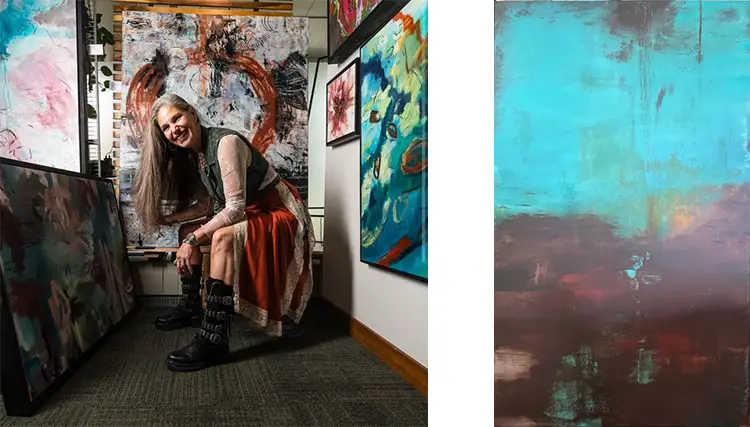
Marcy Stone: Painting the Invisible
Marcy Stone’s creative identity cannot be separated from the seismic emotional shift that followed Sydney’s death. This experience, although deeply traumatic, unearthed a wellspring of emotional and spiritual depth that became the foundation of her artistic expression. It wasn’t a decision to become an artist; it was an inevitability born from a need to translate the untranslatable. Her early works were raw and exploratory, but as her process matured, so too did the clarity of her voice. Her palette brightened, textures thickened, and subjects became vessels for ideas far greater than representation alone could hold.
Themes of love, absence, memory, and transformation dominate her visual language, each rendered in layers that echo the complexity of emotional recovery. These are not paintings meant to be consumed quickly; they are to be felt, contemplated, and sat with. Stone often works in abstraction, using color and texture to articulate inner states that words would fail to encapsulate. At other times, figurative forms emerge—especially within her Divine Feminine series—offering a tangible face to spiritual energy. Each figure she paints feels archetypal yet deeply intimate, as though reaching across dimensions to speak directly to the viewer.
At the center of her practice is a belief that art holds space for healing in a way few other mediums can. Her works do not offer tidy narratives or easy resolutions. Instead, they reflect the ongoing nature of grief and the gradual unfolding of self-discovery through suffering. Whether through layers of vivid acrylic or the subtle interplay of mixed media, Stone creates not to escape reality, but to embrace its full emotional spectrum. Her pieces whisper of love that refuses to fade, of sorrow that reshapes rather than destroys, and of a mother’s enduring effort to stay present with a daughter no longer physically near.

Forgiveness, Freedom, and the Weight of Letting Go
Among her recent bodies of work, the exhibition titled Energetic Signature of Freedom stands as a poignant milestone in Marcy Stone’s journey as both an artist and a mother navigating profound loss. Anchoring the show is a piece titled Freedom follows Forgiveness, a powerful mixed media composition that encapsulates the emotional evolution from resistance to release. Working with acrylics and layered textures, Stone invites viewers into a space where vulnerability is not only visible but deeply felt. The work does not attempt to resolve grief; instead, it honors the beauty of surrender, where healing takes root not through forgetting, but through accepting.
The significance of Freedom follows Forgiveness lies in its emotional clarity. It portrays a shift from the tightly held grief that initially defined her mourning to a more spacious understanding of love’s persistence. Within its bold brushwork and vibrant colors exists a declaration: that freedom does not come from erasing pain but by embracing its place in one’s story. This release is not passive. It is a conscious decision to let go of what cannot be changed, and in doing so, reconnect with what continues to live on—emotionally, spiritually, energetically. Through this work, Stone offers a visual meditation on the grace that emerges when we stop clinging to the physical and open ourselves to the unseen.
The entire exhibition speaks to a broader emotional lexicon that Stone has developed over time. Each piece explores a different aspect of healing—resilience, reflection, presence, and joy reclaimed. Her technique, combining various textures and colors, evokes a sensory experience meant to draw the viewer inward. Instead of viewing from a distance, audiences are encouraged to engage viscerally, recognizing their own emotional narratives in the layers. Energetic Signature of Freedom is more than a showcase of art; it is an invitation to step into a deeper conversation about grief, love, and the liberation that forgiveness makes possible.
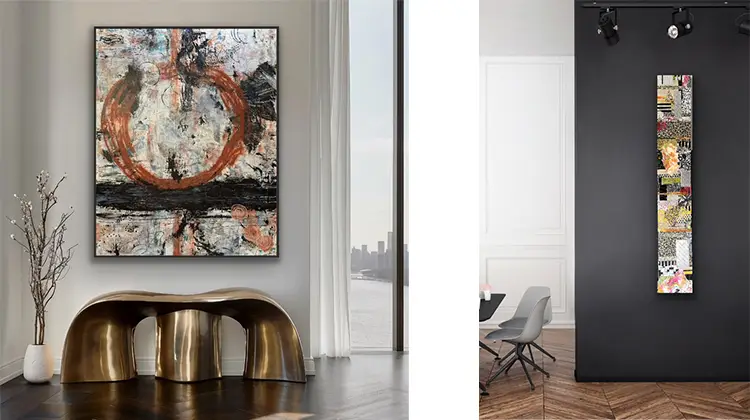
Marcy Stone: Creating Sacred Spaces from Silence
Marcy Stone’s artistic process is not bound by convention but guided by intuition and a profound sensitivity to emotional energy. Her creative flow often begins in silence, shaped by meditation and journaling that allow inner truths to rise gently to the surface. This intentional quiet is not a pause before action, but an integral part of the work itself. Her studio becomes a sanctuary where the unseen finds expression, where energy is translated into movement, and where each piece begins with a whisper of inspiration rather than a predetermined idea.
Themes arrive with distinct voices—sometimes bold and figurative, at other times subtle and abstract. Her Divine Feminine series, for instance, features faces and postures that embody strength, grace, and spiritual presence. These works are not portraits in the traditional sense; they are embodiments of archetypal energies, each figure infused with dignity and calm. Conversely, her abstract pieces lean into sensation rather than form, relying on movement and contrast to evoke emotional landscapes. These two approaches may appear visually different, but they are united by the same core intention: to make emotion visible and love perceptible.
Looking ahead, Stone seeks to deepen the interplay between abstraction and mixed media on a grander scale. Her vision includes large, immersive works that do more than adorn walls—they create environments of remembrance and reconnection. She aims to build experiences that hold space for others to feel, process, and perhaps begin their own healing journeys. With every new series, she continues to explore how the personal can become universal, how stories of loss can illuminate shared humanity, and how art can serve not just as expression, but as transformation. Through these evolving projects, Stone remains committed to turning silence into sanctuary and sorrow into a sacred call to beauty.
